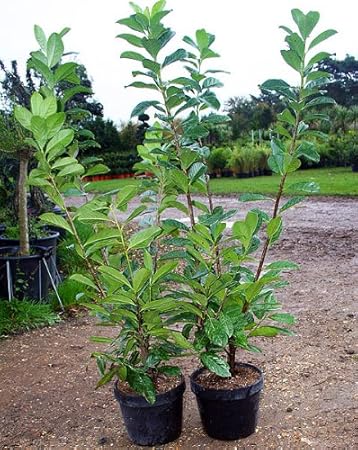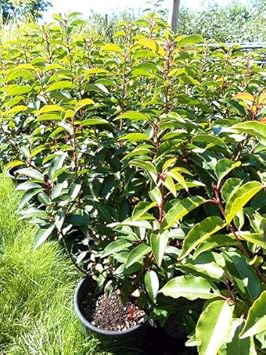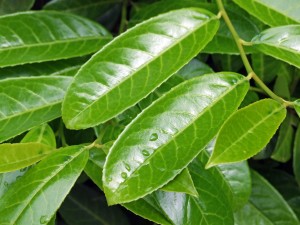There are many plants that go by the name of laurel, and a few in particular that are very popular for laurel hedges. We have many years experience in the laurel hedging industry and decided to create this resource on laurel hedging to reduce the amount of confusion between the different types of laurel available and to help those who do not know anything about laurel hedging to make an informed buying decision.
There is a table of top laurel hedging deals on the right, and below is some more in-depth analysis that will help you to decide the type of laurel hedge that is for you.
Top Laurel Hedging Deals
| Type | Approx. Height | Pot Size | Price | |
|---|---|---|---|---|
 | Cherry Laurel | 100 - 125cm | 7.5L | £17.99 |
 | Cherry Laurel | 150 - 175cm | 30L | £65.00 |
 | Portuguese Laurel | 120 - 150cm | 10L | £34.99 |
 | Bay Laurel | 100 - 125cm | 4L | £17.99 |
Why Laurel Hedging?
Laurel hedging was embraced by the Victorians due to its hardiness and density.
A hedge is a line of closely spaced shrubs or trees planted in a row. Hedges are used to form a barrier, mark boundaries, or as an ornamental feature in the garden. Laurel hedging makes a fantastic choice of hedge because they look good and are easy to maintain thanks to the superb density and hardiness of laurel plants. Any well-drained drained soil is capable of supporting a healthy laurel hedge and they do well in sun or partial shade. Laurel hedging is never a bad choice.
A nicely maintained laurel hedge is an organic wall. It can:
- Act as a screen
- Act as a wind break
- Help to reduce noise
- Increase the security of your property
- Mark your boundary
- Provide a haven for wildlife
- Protect against soil erosion
- Help to protect your privacy
Laurel hedges can be trimmed once a year and kept at any height or width.
Types of Laurel Hedging
Cherry Laurel – Prunus laurocerasus
Also known as Common Laurel and English Laurel.
An evergreen species of cherry native to regions bordering the Black Sea in southwestern Asia and South Eastern Europe. Small white flowers in the spring, followed by glossy red cherries that eventually turn black. The fruit is not edible.
Cherry Laurel is not really part of the laurel family; it actually belongs to the cherry family, Prunus.
Cherry laurel hedges look really good on a large scale.
Bay Laurel – Laurus nobilis
An aromatic green evergreen tree or shrub also known as the Bay Tree and Sweet Bay that is native to the Mediterranean. It has beautiful glossy green leaves all year round, small flowers in the spring, and black fruit in the Autumn.
It is probably best known for the topiary standard trees but it also makes an excellent hedging plant.
The leaves are useful in cooking because they are aromatic.
It is suitable for full sun or partial shade, and will thrive in any sheltered aspect with a well drained soil.
Portugal Laurel – Prunus lusitanica
Also known as Portuguese Laurel.
Rare in the wild, this lovely evergreen shrub makes for a great hedge due to its very dense foliage, rate of growth, and good response to clipping. It has dark glossy green leaves, smaller than cherry laurel but superficially similar to bay.

